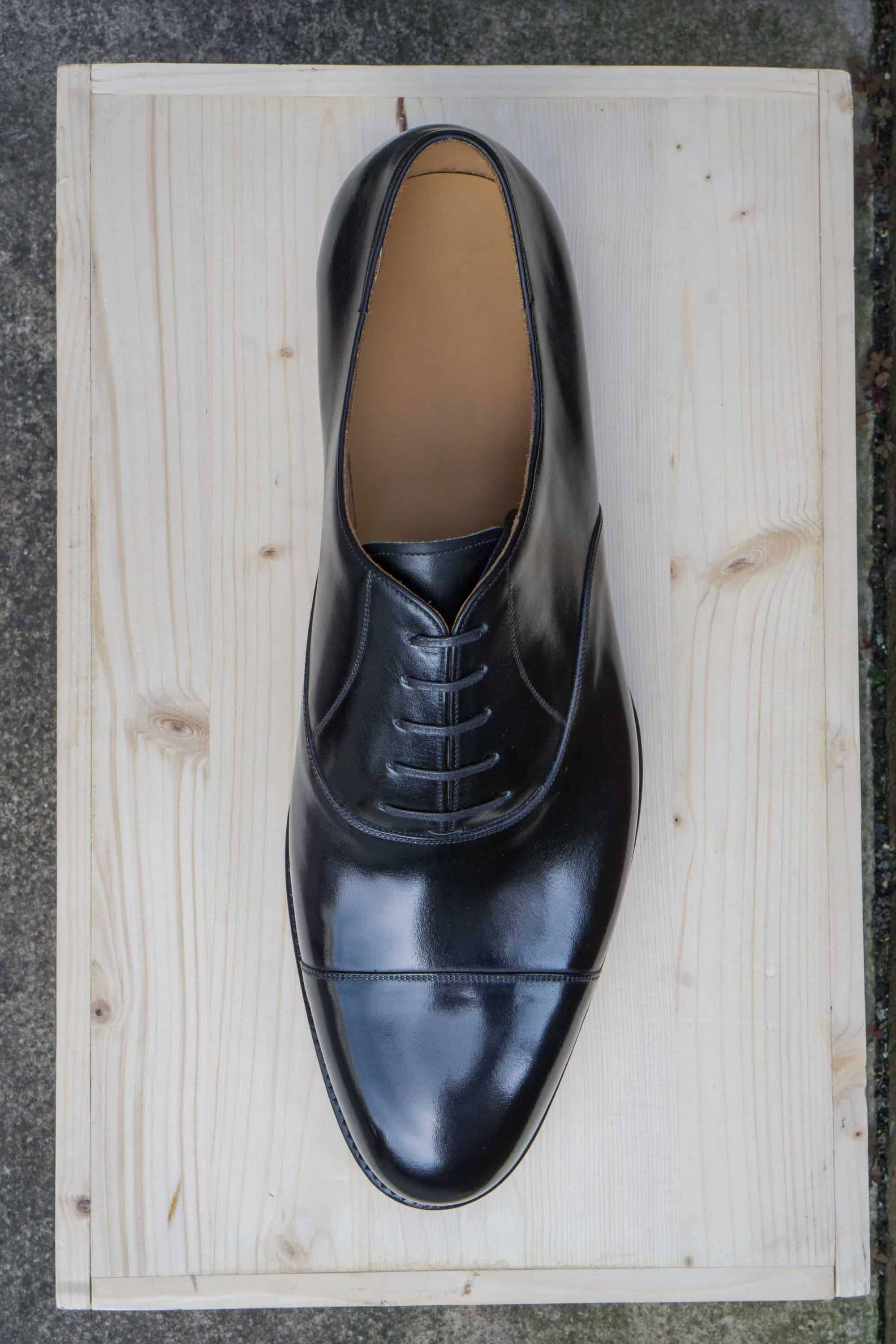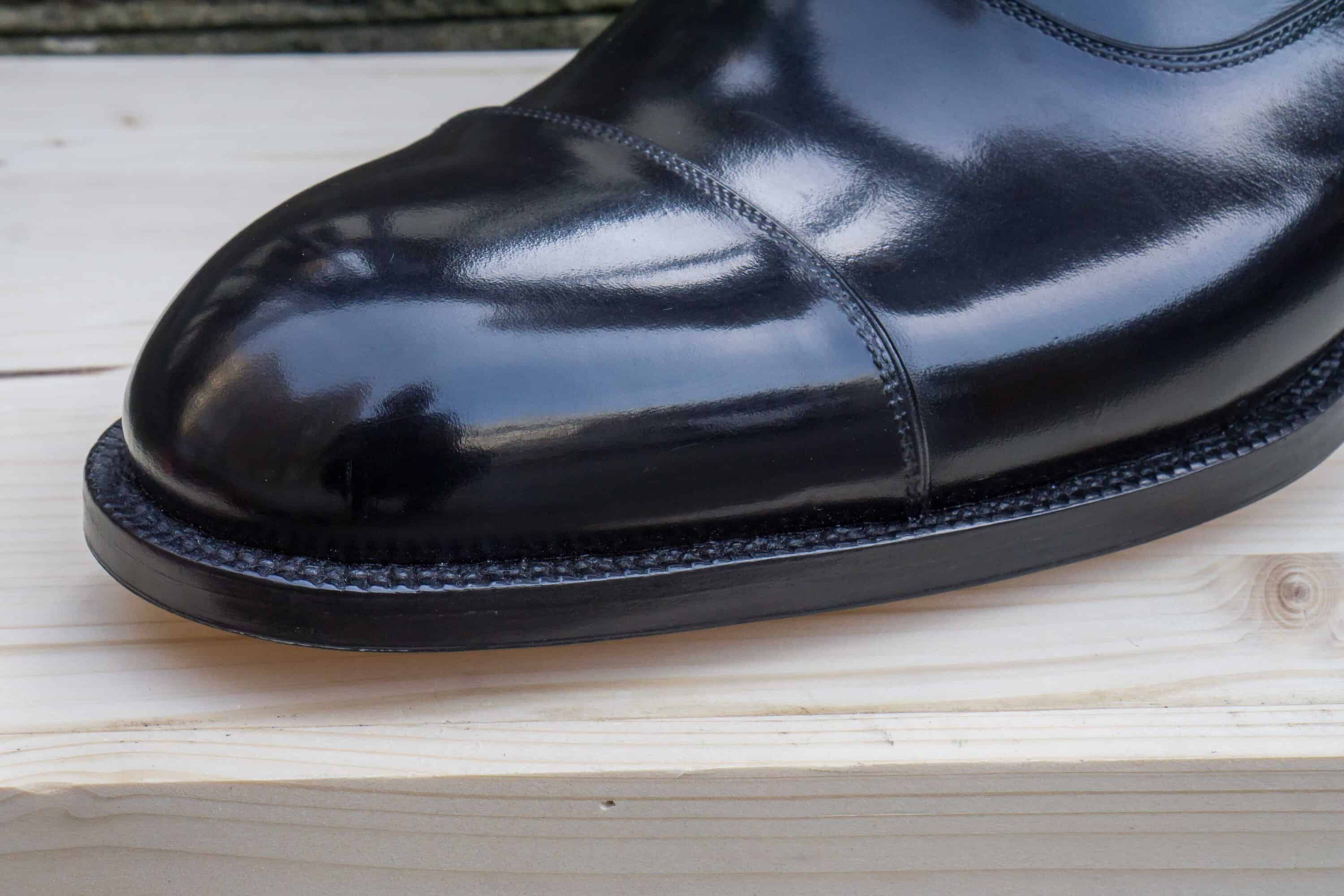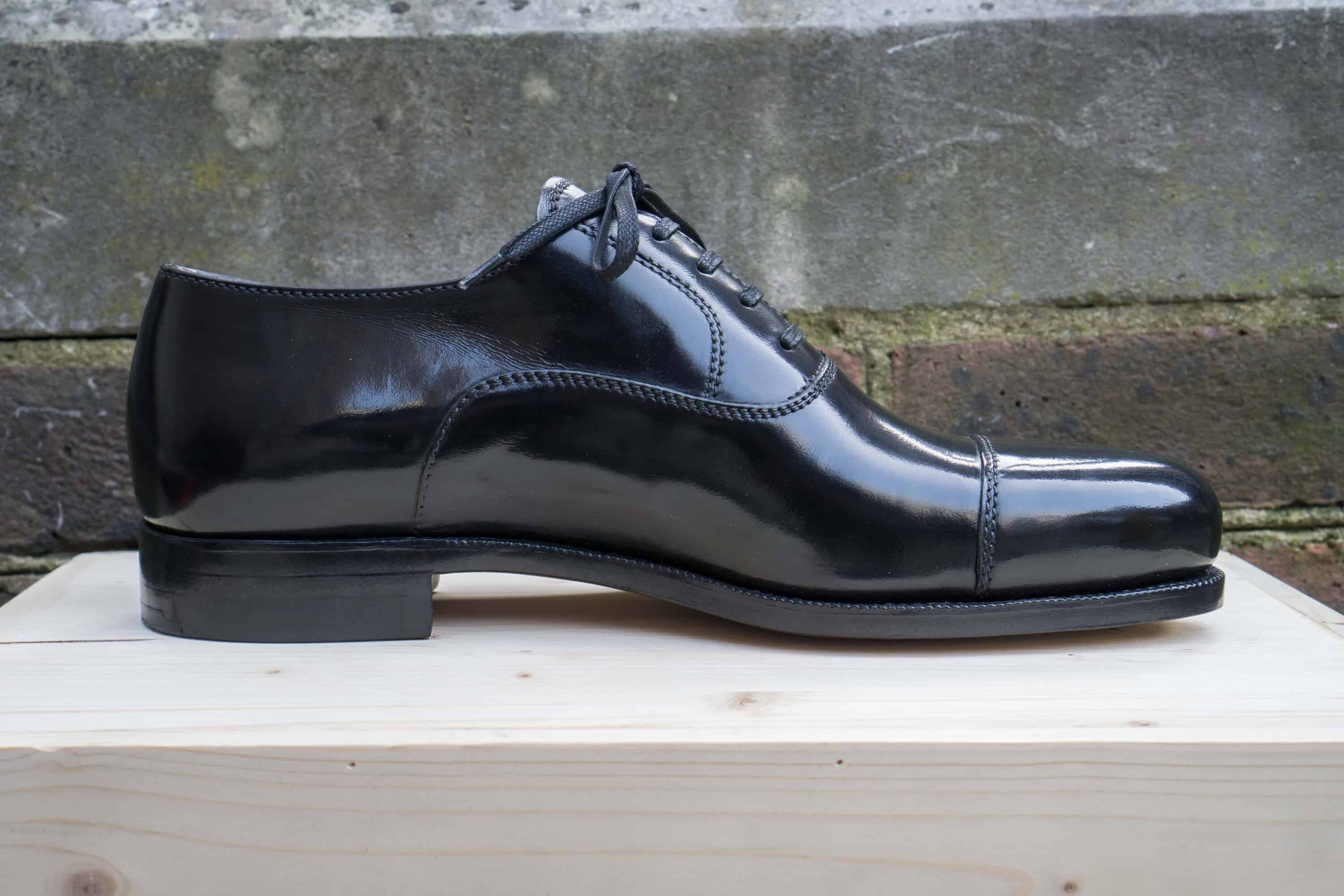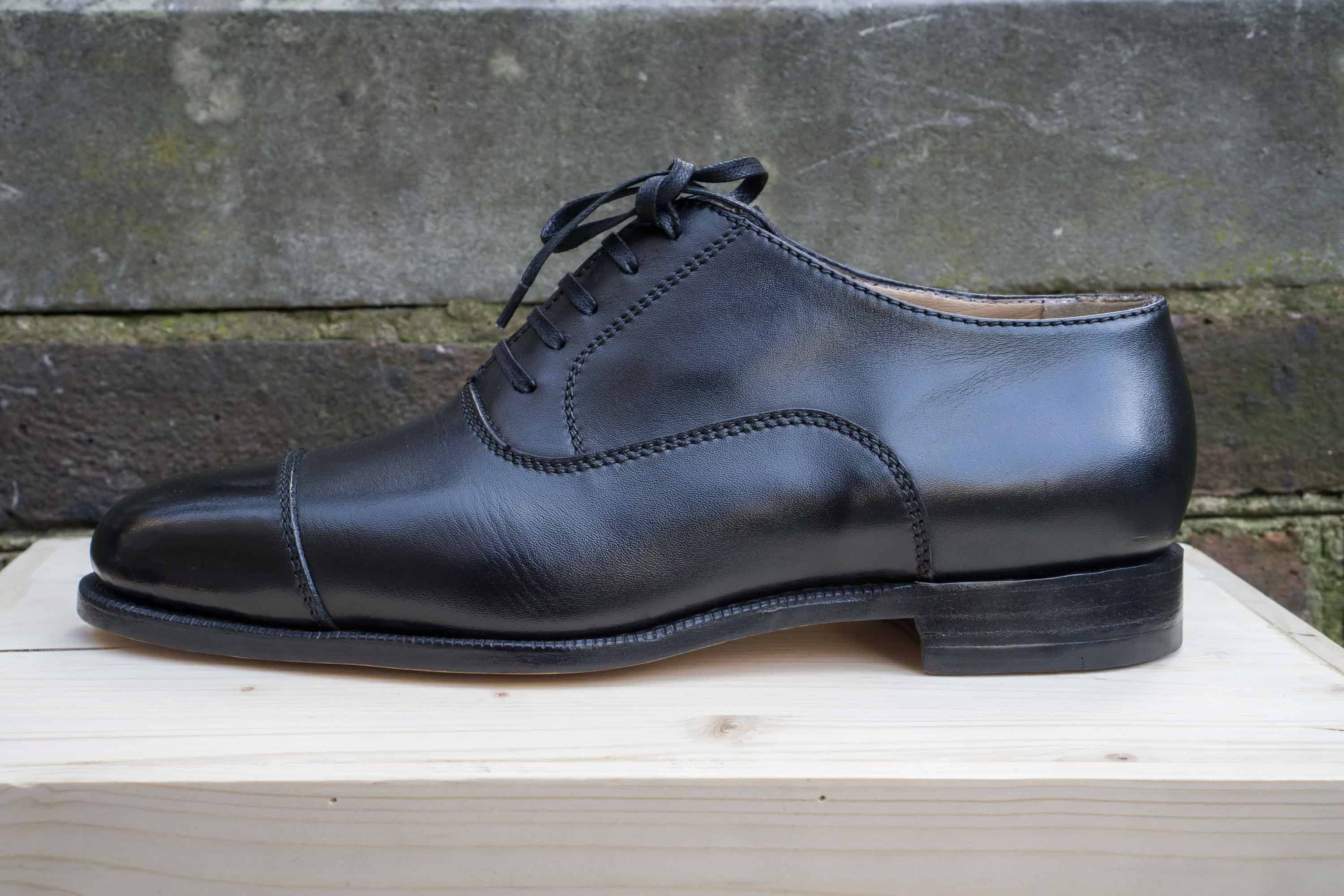***All words by Jesper of Shoegazing Blog, who was my co-host to the London Super Trunk and the World Bespoke Shoemaking Competition***
This is part two of the walkthrough of all competition shoes in the World Championships in Shoemaking 2018. Here position 11 to 30 is reviewed with comments and lots of pictures.
Pt.1 with more info about the contest and positions 1-10 can be found here.
Results (click on maker/brand to go directly to summary):
11. T.Shirakashi Bootmaker
12. Ruoda Zhao
13. Yuuki Homma
14. Antoine Besnard
15. Calzoleria Giacopelli
16. Elrod Shoes
17. Canale Bottier
18. Perticone
19. Stato Martinelli
20. Igor Suhenko
21. Valentin Frunză
22. Vass Shoes
23. euGO
24. Kenjiro Kawashima
25. Salon Lawart
26. Andrey Kaveshnikov
27. F&F Calzoleria Artigiana
28. BRR Shoemaker
29. Calzoleria Artigiana
30. Björn Fröding
.
11. T.Shirakashi Bootmaker

We are done with top ten, the rest of the shoes will be summarised more briefly. Tetsuya Shirakashi, working under the name T. Shirakashi Bootmaker (with one of the best websites of all bespoke makers out there) apprenticed with Yohei Fukuda in Tokyo, and worked as a bottom maker for several years with him. A couple of years ago he started his own brand, focusing on various types of boots, but also making shoes. Tetsuya has made the whole shoe himself, and its another perfectly well-made shoe. Execution is excellent, difficulty good, design is fine although nothing that stands out. What’s striking is that it looks as if the shoe is made with such ease.






.
12. Ruoda Zhao

Ruoda Zhao is a Chinese shoemaker, who is based in Italy working for one of the bespoke houses there. Unfortunately he missed the information on making a left shoe, and made a right one, which he got a 10% deduction of the total points for. The shoe is probably the most Italian styled one in the competition, with wider square waisted outside and bevelled sole edge on the inside, wide sole edge, and an elongated toe. Especially the heel is well-made, created from several thin heel lifts.






.
13. Yuuki Homma

Yuuki Homma is a Japanese shoemaking student, three years into his studies, who have made a really good effort with his competition shoe. All of it is made by him. Not too high points on difficulty, for example a square waist outside and pegged inside of the waist are in general easier to make than properly blind welted waist edges. Nifty details like the folded cap toe are nice to see, and they are built perfectly fine, especially considering Yuuki being new into the shoe world.





.
14. Antoine Besnard

Another maker who is only three years into his journey with shoemaking. French Antoine Besnard, part of the Compagnons du Devoir apprenticeship programme, is now working for the bespoke house Massaro (of who third placed Philippe Atienza used to manage). His shoe is made entirely by him, and he has been ambitious. The upper is hand stitched (one of two in the contest), which is of course impressive. It doesn’t look as neat as machine stitched, but received higher difficulty points. Sole stitch is also tight, and relatively well-made. Main lack is the finishing, which could be more refined. The fact that Antoine is only 22 years old, makes us think he has a bright future ahead.







.
15. Calzoleria Giacopelli

Calzoleria Giacopelli is an Italian firm founded in 1976 in Parma, run by Giacomo Banzola and his sister. The shoe is a relatively elegant take on the plain cap toe oxford, slim waisted with close-cut sole edge and tapered heel. Some interesting details like the straight breast of the heel (the front part) and space between the stitching running along the facing and the vamp. Sole has a bit special finish, doesn’t look super neat.





.
16. Elrod Shoes

Reid Elrod of Elrod Shoes is a young shoemaker based in Portland, USA, with one leg in the European shoemaking tradition and one leg in the American bootmaking tradition. This is also very evident in his shoe. He received a 10% deduction for his pattern of the upper, with punching, since it was stated to be a plain cap toe oxford model. The shoe is really interesting though, with lots of details to admire, like the star pattern with nails on the heel top piece, or the slightly cuban heel shape (concave, also the breast). Execution is good, though room for improvement. Reid took shoemaking courses in Europe back in 2010, came back to the US and practiced for several years, before he started offering his services to customers three years ago.






Some shoes of the making process.



.
17. Canale Bottier

Anthony Canale, behind Canale Bottier, is another young shoemaker, with the roots in shoemaking family from Italy. Anthony is based in Paris, where he has his workshop as part of an old shoe repair shop. His shoe received a 10% deduction of the total points due to the semi balmoral pattern, not aligned with the guidelines stating model to be a plain cap toe oxford. The degree of difficulty is relatively high still. Sole stitching is tight, waist closely trimmed, etc. It’s a bit behind the better ones in the contest when it comes to how neat and well these parts are done though.





.
18. Perticone

Perticone is a brand from Rome, behind it is the Japanese Seiichi Yoshimoto. Last, pattern and bottom making has been made by him, upper closing by Pompieri Loredana. It’s a shoe where execution received slightly higher points than difficulty. Still, the tight sole stitching, very closely trimmed heel and sole decoration is good and not too “easy to make”-stuff, and the work is in general made well.






.
19. Stato Martinelli

Paolo Martinelli, the man behind the brand Stato Martinelli, used to work in the building sector, but a few years ago he decided to follow his dream and learn to make shoes. After apprenticing for a couple of years, he began making shoes on his own and last year launched his brand. All on the shoe is made by him. His shoe is the only 360? welt (where the welt and sole stitch goes all around the shoe) in the contest, which is nice that we have a varied type of shoes. The making isn’t super neat, you can see that it’s a person who is relatively new to shoemaking, but who has talent.





Stato Martinelli also took some pictures of the manufacturing.



.
20. Igor Suhenko

Igor Suhenko is from Serbia, where he has made shoes since 1988. His shoe has several nice details, like a well made pegged waist (even if it’s not rated as high on difficulty as a similar blind welted waist), and the quite tight sole edge. Making is quite okay, though not the most refined.





.
21. Valentin Frunză

Valentin Frunza is from Moldova, where he already at the age of 12 started to learn shoemaking in his fathers workshop. Much later he also began making welted shoes, and started his own brand. His shoe is the second one in the contest which is completely made by hand, where also the upper has been hand stitched. Square waisted with a relatively tight sole stitch, though not made to align with the decoration treatment on top of the welt which deducts on execution.





A few pictures of the making.



.
22. Vass Shoes

Vass is one of the most famous names in this contest. The Hungarian shoemaking brand, who nowadays only do RTW, MTO and some MTM, still hand welted though. We haven’t received the info about who of the employees in the workshop that has made the competition shoe. It received a 10% deduction of the total points due to the black sole treatment. The shoe is solid, but nothing that stands out, and made with the same degree of difficulty as their RTW basically just a bit more carefully carried out. The sparse sole stitching and waist edge which is only trimmed and hammered tight, not blind welted, is also fairly standard.






.
23. euGo

EuGo is the brand of Yeerult Gombossed from Mongolia. He learned the craft from his grandfather, and has then been abroad in several European countries to study shoemaking further. He now splits the time between Mongolia, where he has his euGo brand, and San Francisco in the US, where he collaborates with American bootmaker Frank Beneducci. He has made the whole shoe himself. Closing is good, the making has some better parts, for example sole decoration and heel build, and some parts not as good, like the slightly rougher welt finishing.





.
24. Kenjiro Kawashima

Kenjiro Kawashima is a quite young shoemaker from Tokyo, Japan. His shoe has several strong points going for it, but some issues, for example he has received 10% deduction for the semi balmoral pattern and the sole finish, which didn’t follow the guidelines (perhaps due to language issues). Heel is built quite well, the waist with its straight edge outside and blind welted inside looks is fine. Some parts that could be improved is for example the little bit wavy welt and balance of the last.




.
25. Salon Lawart

Salon Lawart is a Czech bespoke brand, founder E.M. Lawart has made last, pattern and making, apprentize Aneta Gretzova made the upper. Points for aesthetics/design weren’t too high, even if it’s partly a subjective thing the shoe do look a little bit off in balance, with the low last and heel and forward leaning back part. Some making parts are quite good, like the well made pegged waist and sole stitching. Received a 5% deduction since the waist, similar to Patrick Frei, was slightly coloured. EM Lawart started making shoes in 1995, first historical shoes for theatre etc, now he is one of the most famous bespoke shoemakers in Czechia.




A couple of pictures from the manufacturing:



.
26. Andrey Kaveshnikov

Bespoke shoemaker based in Moscow, Russia. He has made all parts of the shoe himself. Best part on the shoe is the sole stitching, which is tight at 16 spi (stitches per inch) and quite clean. Main lack is in the finishing of the waist edge, upper heel and the sole. The waist is built up quite a lot which is apparent especially when looking at the shoe from the side.





Also here we have some shots of the making:



.
27. F&F Calzoleria Artigiana

F&F is a brand founded in 2013 by Francesco Masci, a former lawyer who first worked together with Florin Cristian Ardelean (who now has left for his own workshop, his shoe is in place 29), but now is on his own in his Rome workshop. Closing is well made, making is quite straight forward and okay in execution. The close-cut sole edge clashes in an interesting way with the more Austro-Hungarian feeling of the last and general appearance.




.
28. BRR Shoemaker

Another Russian bespoke brand, BRR Shoemaker is alias for Ivan Belov, based in Russias fourth largest city Ekaterinburg. The ambition of his shoe is good and there are better parts, but the partly rough finishing makes the appearance a bit behind. Best is the tight waist and sole stitching, less good is the finishing of the sole edge which has been bleeding in on the sole making it look very uneven, and heel could be more smooth.





.
29. Calzoleria Artigiana

As mentioned above, Calzoleria Artigiana is the brand of Florin Cristian Ardelean who left F&F to set up his own workshop on another location in Rome. You can clearly see the resemblance with his former companion (on position 27). Lower toe box and thinner sole here though. The making has some flaws, it’s a bit uneven here and there, so the overall feeling of the shoe isn’t too clean. Also things like making the sole stitch sparse and then decorate with tighter fudging isn’t the highest difficulty.




.
30. Björn Fröding

The third Swede of the contest, and I believe also the only amateur in the contest. He makes shoes as a hobby in his spare time, and has had no training, just studied books and online videos. The making is rather rough and lacks refinement. But he has managed to get the waist in very tight, and the lining is a really nice piece.




Pt.1 with more info about the contest and positions 1-10 can be found here.












